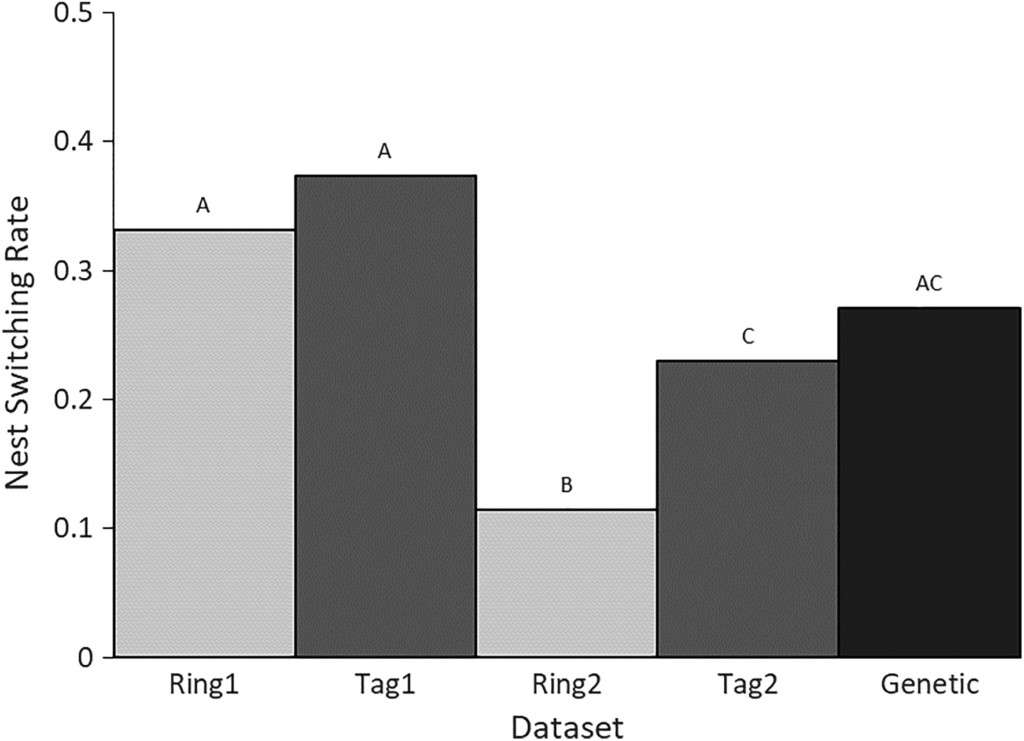![]()
LINKED PAPER
Estimating nest-switching in free-ranging wild birds: an assessment of the most common methodologies, illustrated in the White Stork (Ciconia ciconia). Turjeman, S., Eggers, U., Rotics, S., Fiedler, W., Centeno‐Cuadros, A., Kaatz, M., Zurell, D., Jeltsch, F., Wikelski, M. & Nathan, R. 2021. IBIS. DOI: 10.1111/ibi.12933. VIEW
Nest-switching – the displacement to another nesting location – can impact breeding success (Greenwood & Harvey 1982). In general, birds tend to move to a new site when breeding success is low or local competition is too high (Robert et al. 2015). Measuring the frequency of nest-switching in a population is no easy challenge. For example, how would you deal with ‘missing birds’ that nested in one year but were not seen during the following breeding seasons? They might have died, moved to a faraway location or just skipped a breeding season (Sergio et al. 2019). In a recent literature study, Sondra Turjeman and her colleagues identified three main approaches to quantify nest-switching: (1) direct nest monitoring or ring recovery data, (2) genetic methods, and (3) long-term movement tracking with GPS devices. To assess the reliability of these methods, the researchers applied them to a well-studied species, the White Stork (Ciconia ciconia).
Missing birds
The researchers assembled an impressive dataset, combining information from several research projects in north-eastern Germany. To assess the impact of ‘missing birds’ on estimates of nest-switching, the ring recoveries and the GPS data were analyzed in two ways, namely including and excluding ‘missing birds’. The genetic approach indirectly quantified nest-switching by focusing on the genetic make-up of the nestlings (Blouin 2003). By comparing the relatedness of nestlings in the same nest over several years, the researchers could deduce whether the parents switched nests or not. These diverse approaches led to a range of nest-switching estimates, from 11% (ringing data without ‘missing birds’) to 37% (GPS data with ‘missing birds’) of White Storks moving to another location.

Figure 1. Nest-switching estimates for all methods. The datasets Ring1 and Tag1 included ‘missing birds’ whereas Ring2 and Tag2 excluded them. Bars marked with the same letter are not significantly different from one another.
Methodological decisions
What can we learn from this exercise? It is obvious that the way ‘missing birds’ are analyzed can have a significant impact on the estimates of nest-switching. The decision to take these ‘missing birds’ into account or not will depend on the specific research questions. Regardless of the choice, it is always important to discuss any findings in the light of potential biases that might arise from including or excluding ‘missing birds’. Detailed descriptions of the methodological approach ensures that other researchers can interpret the results and replicate the study. Birds might not be very transparent in their nest-switching behavior, but researchers should be in their studies.
References
Blouin, M.S. (2003). DNA-based methods for pedigree reconstruction and kinship analysis in natural populations. Trends in Ecology & Evolution 18: 503– 511. VIEW
Greenwood, P.J. & Harvey, P.H. (1982). The natal and breeding dispersal of birds. Annual Review of Ecology and Systematics 13: 1– 21. VIEW
Robert, A., Bolton, M., Jiguet, F. & Bried, J. (2015). The survival–reproduction association becomes stronger when conditions are good. Proceedings of the Royal Society B: Biological Sciences 282: 20151529. VIEW
Sergio, F., Tanferna, A., Blas, J., Blanco, G. & Hiraldo, F. (2019). Reliable methods for identifying animal deaths in GPS- and satellite-tracking data: review, testing, and calibration. Journal of Applied Ecology 56: 562– 572. VIEW
Image credits
Top right: White Stork (Ciconia ciconia) | Gzen92 | CC BY-SA 4.0 Wikimedia Commons
Blog posts express the views of the individual author(s) and not those of the BOU.
If you want to write about your research in #theBOUblog, then please see here




